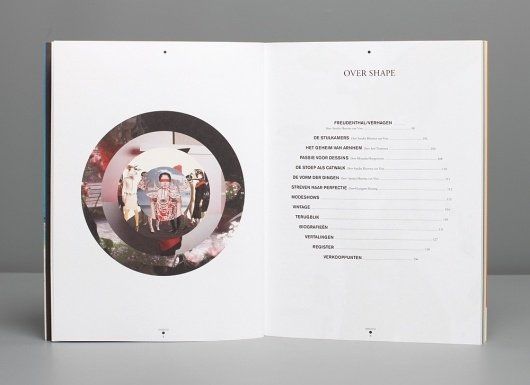
This is the Table of Contents for Playbill Magazine (that little program you get at a Broadway show). I like the simplicity, brief single-sentence descriptions, and the hierarchy of elements. I think this basic format is used because the contents are all on one page (8″ x 5.5″ dimensions), so it is a very small space to work with. I think there is somewhat of a grid for the type and images separately, but because they don’t line up too well, it’s hard to see how one cohesive grid could be used for both of them. Grid or no grid, the images are still visually pleasing next to the type, so I don’t see any issues there. The emphasis is on the bold type, which includes the headings and article titles. The orange color is also used to further emphasize the headings, as well as the Playbill logo.






 I had an odd difficult time finding a very modern type of table of contents. But, interesting enough, I enjoyed looking at how simple older table of contents were. This book, The Land of Oz: the Further Adventures of the Scarecrow and the Tin Woodman, is from 1904 and uses all kinds of simple. The images only relate to the characters in the book, the font seems to be consistent, and the color well is black. There’s not a lot of hierarchy since the page was made to its simplest form. It’s all straight to the point for the readers to not get distracted or possibly overwhelmed because there is too much going on in the page. Now a days, of course, it could be better. It could be designed with various font and possibly add color (since its feasible) to create hierarchy and a more appealing, eye-grabbing look. But for a 1904 book, it’s not too bad, just in it’s simplest form of design.
I had an odd difficult time finding a very modern type of table of contents. But, interesting enough, I enjoyed looking at how simple older table of contents were. This book, The Land of Oz: the Further Adventures of the Scarecrow and the Tin Woodman, is from 1904 and uses all kinds of simple. The images only relate to the characters in the book, the font seems to be consistent, and the color well is black. There’s not a lot of hierarchy since the page was made to its simplest form. It’s all straight to the point for the readers to not get distracted or possibly overwhelmed because there is too much going on in the page. Now a days, of course, it could be better. It could be designed with various font and possibly add color (since its feasible) to create hierarchy and a more appealing, eye-grabbing look. But for a 1904 book, it’s not too bad, just in it’s simplest form of design.




